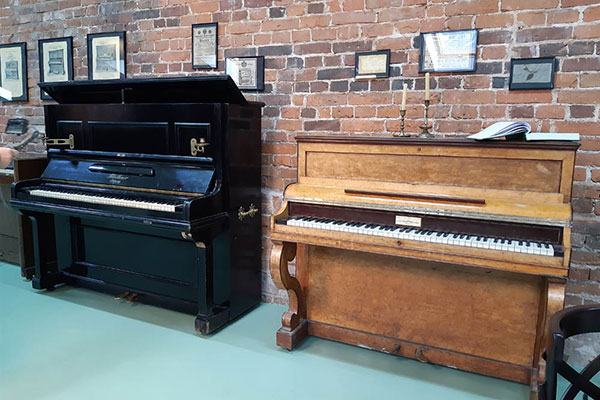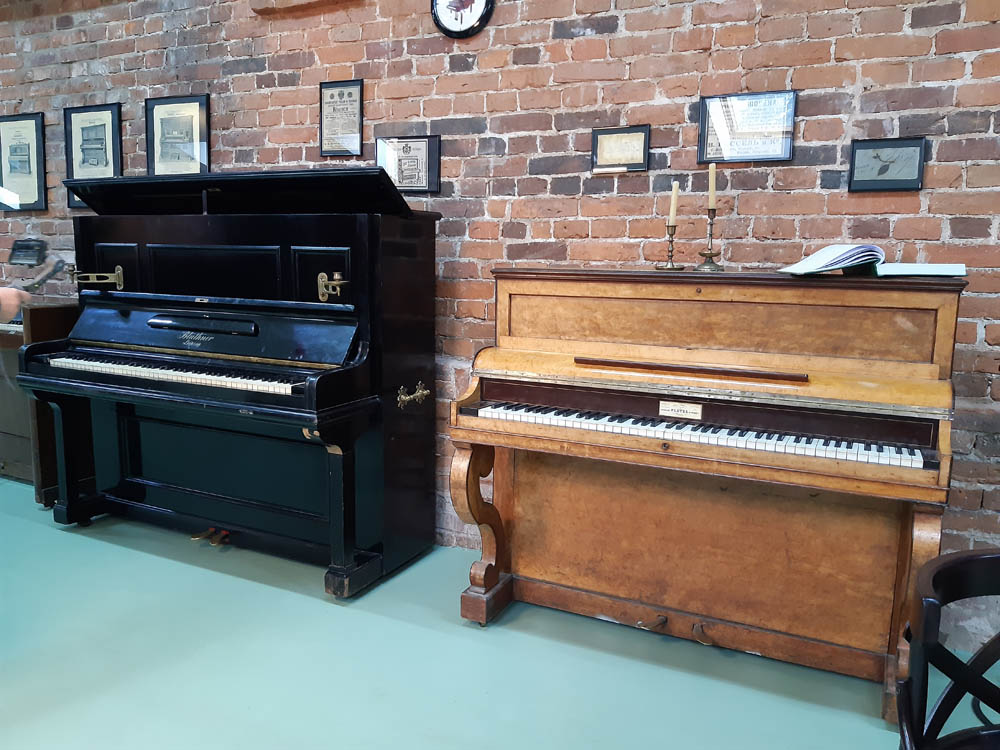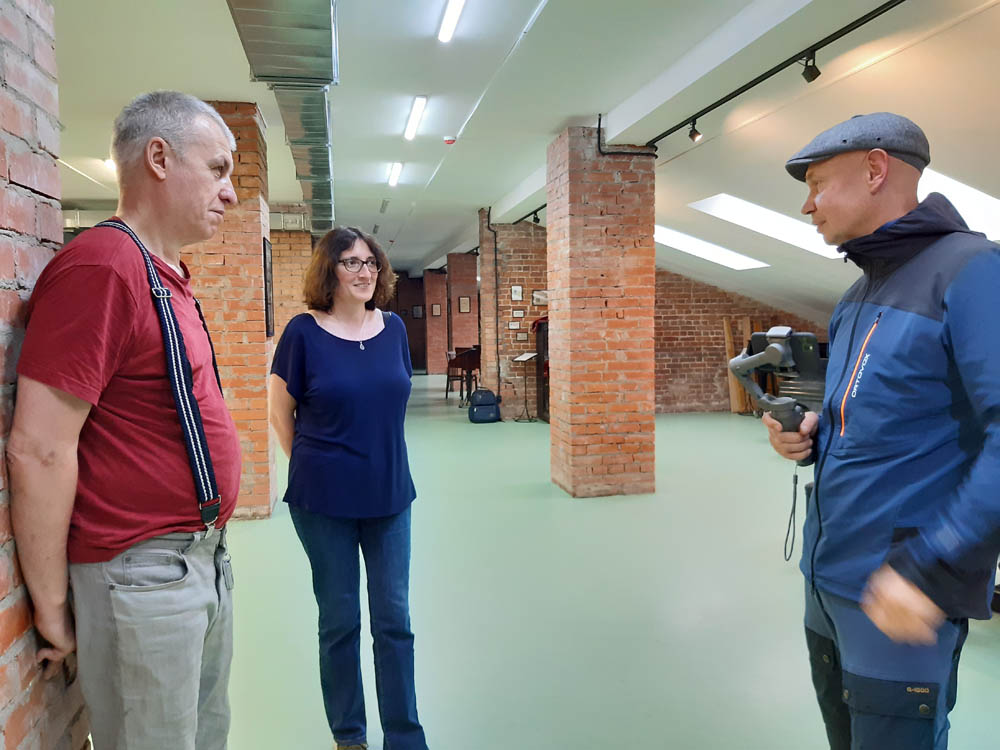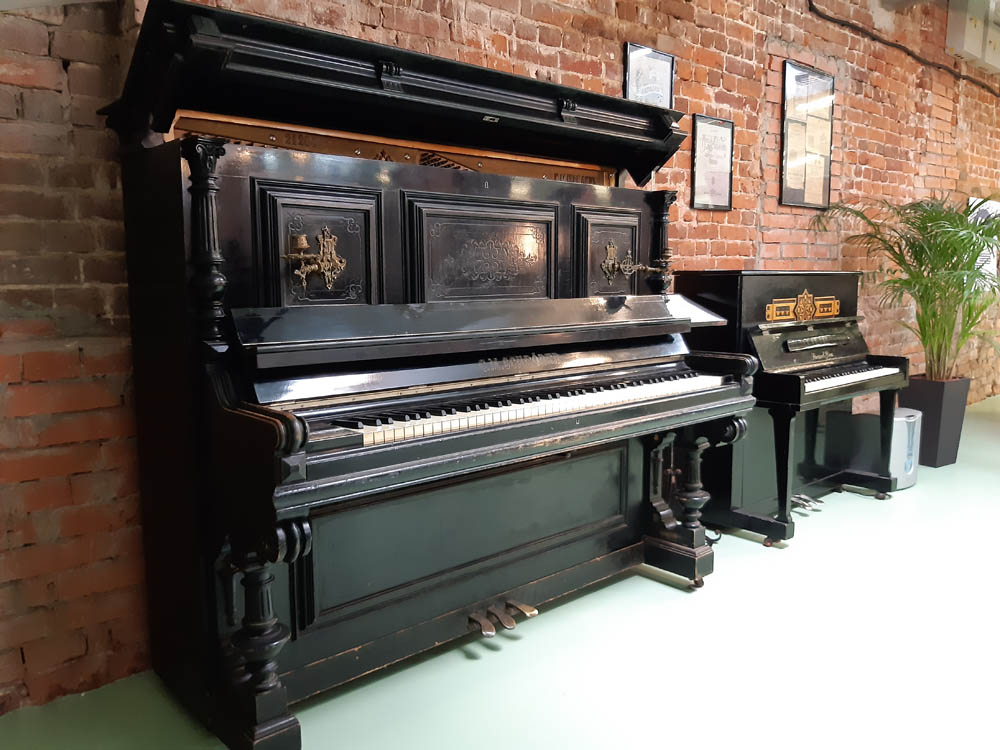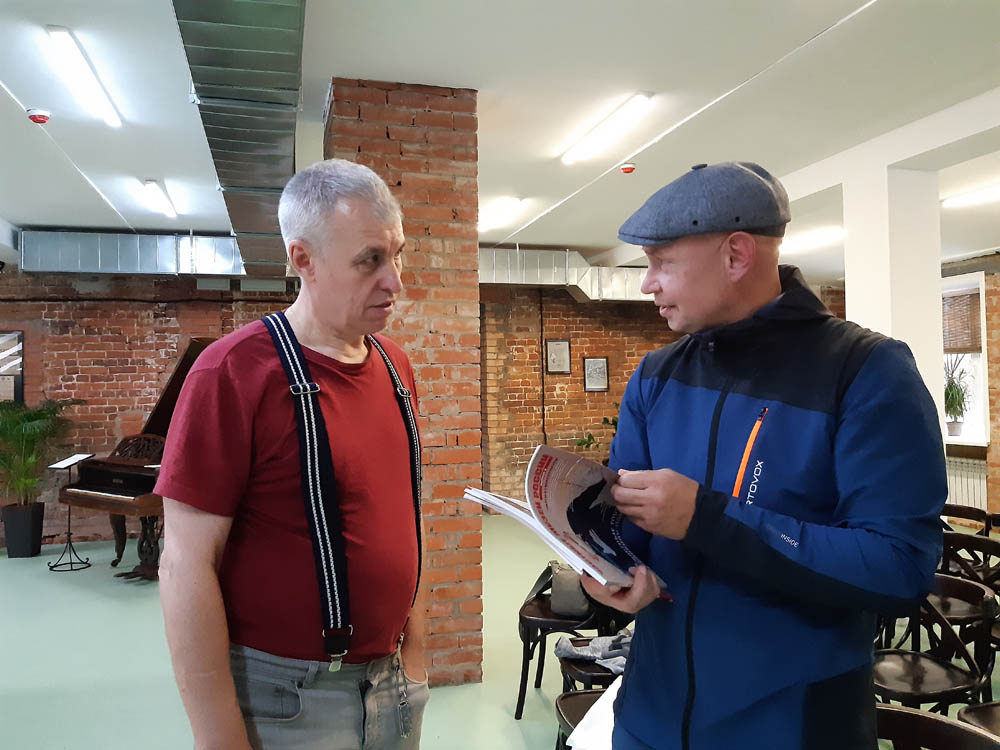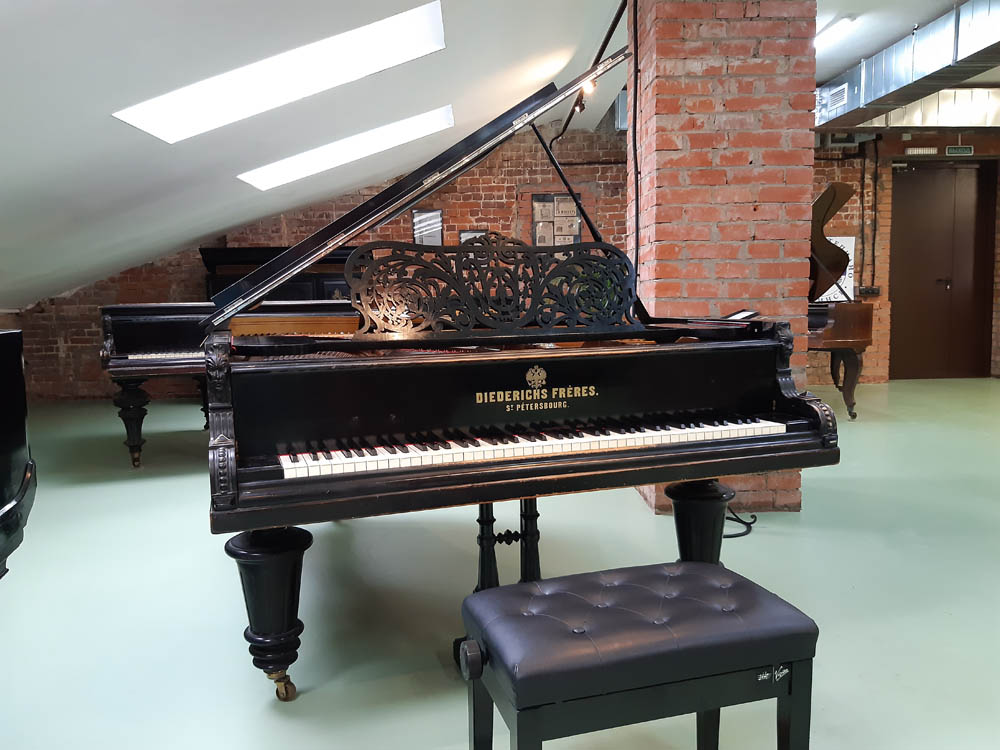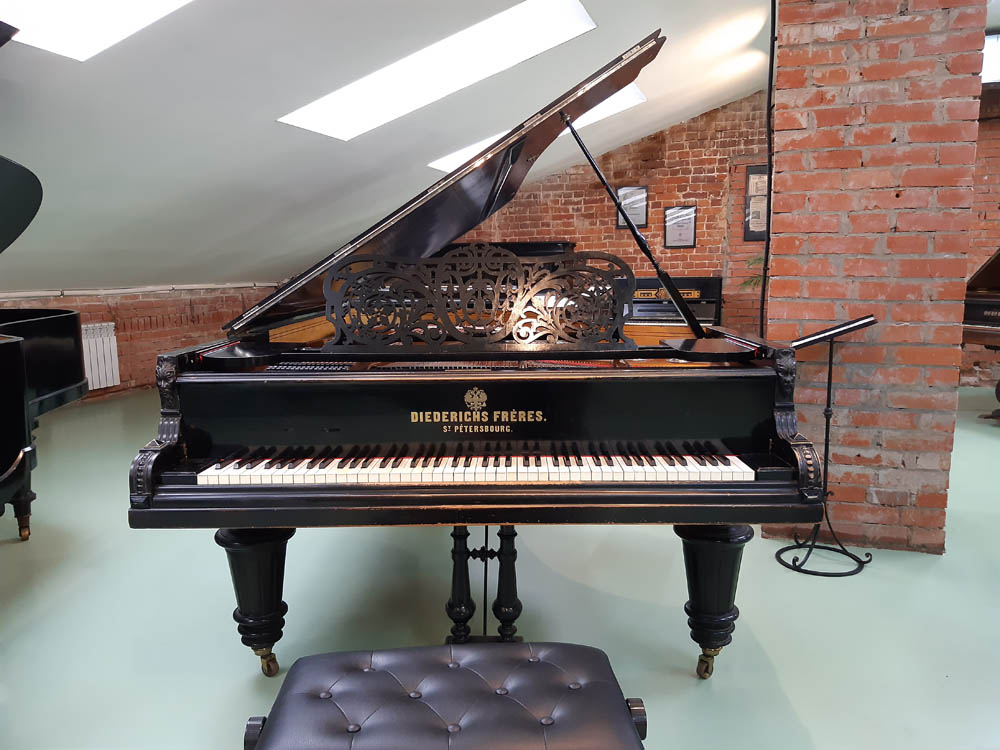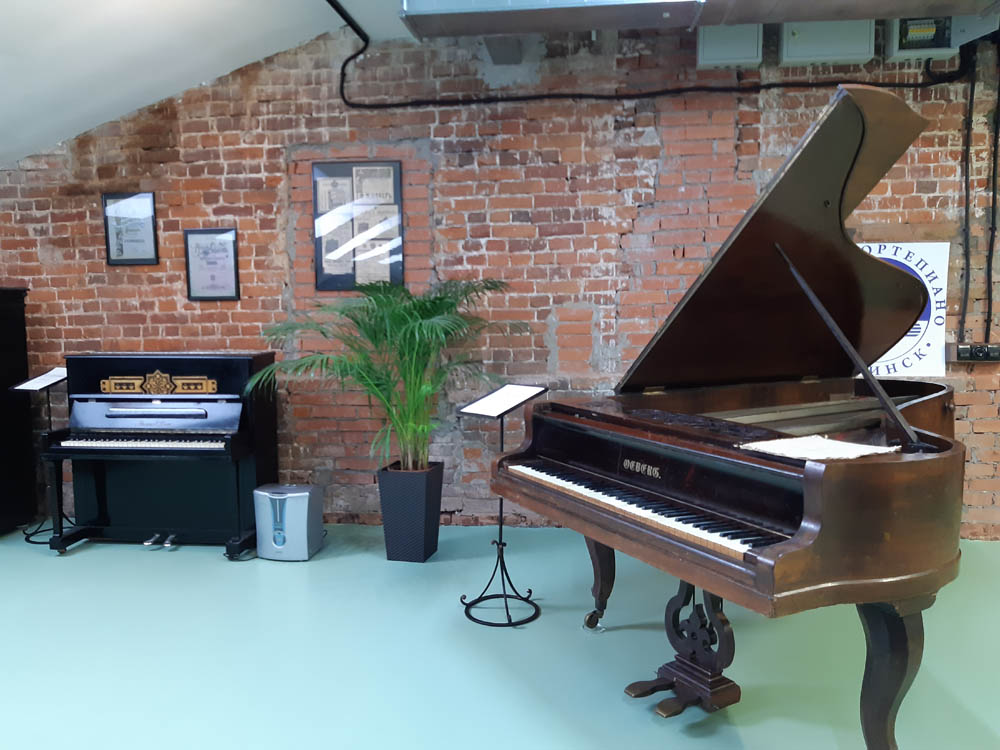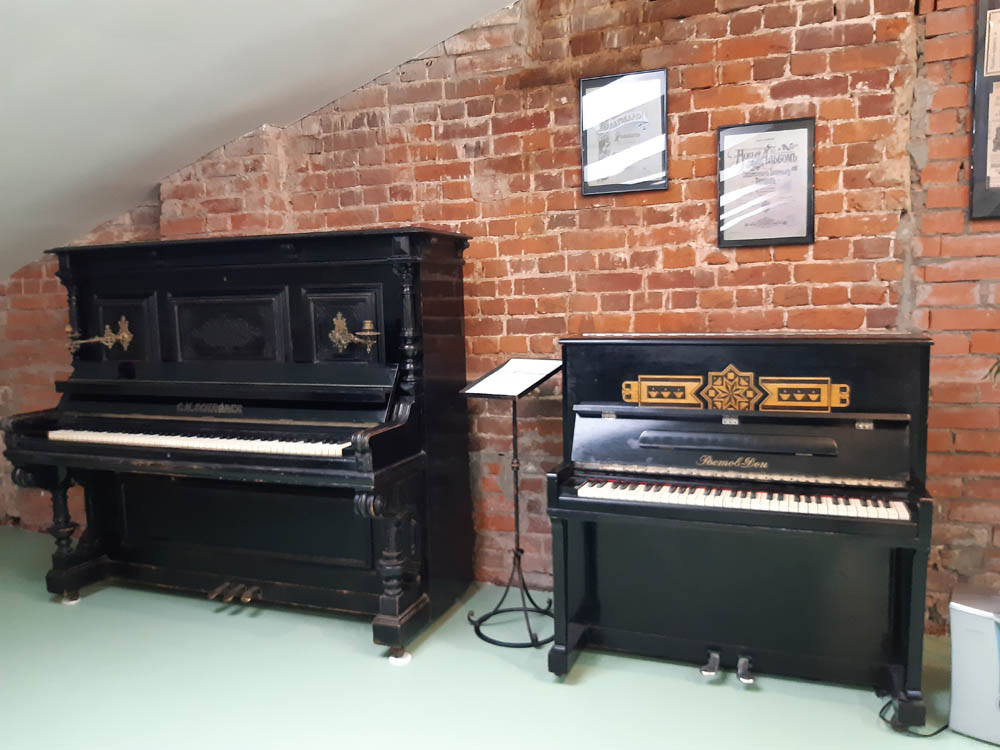The Piano Museum opened in December last year, but has already won the hearts of residents of Rybinsk. It is an absolutely incredible, large and beautiful project. After visiting the Piano Museum, many people say that this is the best thing that has happened in the city in recent times. The team of The Association of private museums of Russia was also convinced that this is true. Arriving in Rybinsk, sthe delagiton first went to the building of the Red Gostiny Dvor, where the museum is located. Here the founder of the Museum – a musician, collector, famous restorer and master tuner, whose work schedule is organized for several years ahead, Alexey Stavitsky was waiting for the delegation.
Stavitsky dreamed about his museum for several years. Studying museum business, he travelled all over Europe, visited Poland, the Czech Republic, France, Germany, and attended historical performance competitions. He gathered a powerful live experience that allowed him to create not just a museum, but a place for meetings, chamber performances, competitions and master classes.
The Piano Museum is a small concert hall where the cult of black and white keys reigns. Here, old foreign grand pianos and pianos – German, French, Viennese, English – compete with Russian instruments made before the revolution and during the Soviet era. “Who knows today that “Steinway” is not the pinnacle of piano creativity? That we had two dozen piano factories in Russia, all of them world – class? And it is the culture of piano production that is one of the reasons why we have such names as Mussorgsky, Taneyev, Balakirev, Glinka, Prokofiev, Shostakovich…”, – says Alexey Stavitsky.
In total, the Piano Museum has 120 instruments, each with its own history! Now about twenty are exhibited in Rybinsk. In addition to Grand pianos and pianos, there are harpsichords and clavichords. The oldest instrument is 180 years old. The piano was produced in the 1840s by the Moscow factory “Eberg”. There are plans to bring an organ and a four – sided table-shaped piano to the city from an even earlier year of production, i.e. 1805 year.
There are name tools in the museum – Royale “Helveg”, miniature piano 50-60 years of the XIX century, which was played by modest Mussorgsky, pianos of Alexei Lubimov, and Andrew Myasoedova, teachers Alexey Stavitsky, piano of Konstantin Igumnov, Professor at the Moscow Conservatory, who studied Maria Chelishchev, the creator of the Rybinsk music school named after Tchaikovsky. That piano could be played by Mary Luarsabovna.
The pride of the collection is the Red October Grand piano. It was played in dozens of concert halls. It was played in the Gorky Park, in the Center of tolerance. The composer Vladimir Martynov performed his compositions behind him. This Grand piano has seen much more than the average conservative instrument. Once in 2014, he “played” a 23-hour marathon near the Tchaikovsky monument at the Moscow Conservatory on the anniversary of the famous pianist and Conservatory Professor Alexey Lyubimov.
“Piano Russia began to disappear as the city of Kitezh, – says the restorer. – I stood in the way of this process. I want to create a restoration school, organize a scientific Department at the Museum. What I want to do is pass on my knowledge… So that the pianists can learn all this and try it out. They haven’t even touched it before. Piano and music Russia is a huge country, an original and vibrant part of world culture. It is more than 200 years old. And we can, all together, multiply, save and tell our descendants how beautiful it is.”
